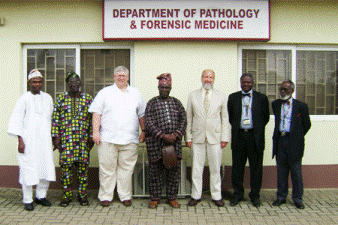Natural Resources, School of
Date of this Version
2020
Document Type
Article
Citation
Borry M, Cordova B, Perri A, Wibowo M, Prasad Honap T, Ko J, Yu J, Britton K, Girdland-Flink L, Power RC, Stuijts I, Salazar-García DC, Hofman C, Hagan R, Samdapawindé Kagoné T, Meda N, Carabin H, Jacobson D, Reinhard K, Lewis C, Kostic A, Jeong C, Herbig A, Hübner A, Warinner C. 2020. CoproID predicts the source of coprolites and paleofeces using microbiome composition and host DNA content. PeerJ 8:e9001 DOI 10.7717/peerj.9001
Abstract
Shotgun metagenomics applied to archaeological feces (paleofeces) can bring new insights into the composition and functions of human and animal gut microbiota from the past. However, paleofeces often undergo physical distortions in archaeological sediments, making their source species difficult to identify on the basis of fecal morphology or microscopic features alone. Here we present a reproducible and scalable pipeline using both host and microbial DNA to infer the host source of fecal material. We apply this pipeline to newly sequenced archaeological specimens and show that we are able to distinguish morphologically similar human and canine paleofeces, as well as non-fecal sediments, from a range of archaeological contexts.
Included in
Archaeological Anthropology Commons, Ecology and Evolutionary Biology Commons, Environmental Public Health Commons, Other Public Health Commons, Parasitology Commons


Comments
Copyright 2020 Borry et al.